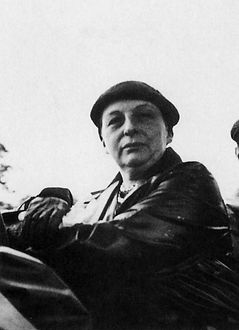
Ludwig Mies van der Rohe
Bauhaus director, 1930 – 1933
Ludwig Mies van der Rohe was a shining star of German avant-garde architecture when he joined the Bauhaus as its director. This post enabled the architect to devote his energy to teaching for the first time.









Walter Gropius
Director, 1919–1928
Walter Gropius founded the Bauhaus in 1919 as a new type of art school that combined life, craft and art under one roof. Gropius managed the Bauhaus as its director until 1928.
Hannes Meyer
Bauhaus director, 1928 – 1930
He is often called the unknown Bauhaus director but in retrospect it seems that Meyer probably influenced the Bauhaus and its students more than Gropius may have wanted to believe.
Marianne Brandt
1923–1928 Bauhaus student /
1928–1929 deputy head of Metal
László Moholy-Nagy quickly recognised her unique talent. With his encouragement, Brandt studied in the male domain of the metal workshop – proving more successful than many of her classmates
Otti Berger
1927–1930 Bauhaus student / 1931–1932 deputy head of Weaving
Berger was acting head of Weaving after Gunta Stölzl left. She later opened her own “Textile Studio” but being Jewish she was soon banned from practising her trade. Otti Berger died in Auschwitz in 1944.
Anni Albers
1922–1928 Bauhaus student /
1928–1929 and 1930–1931 deputy head of Weaving
Anni Albers originally wanted to be a painter, but it was at the loom where she found artistic freedom at the Bauhaus. In her work she primarily explored abstraction.
Marcel Breuer
1920–1924 Bauhaus student /
1925–1928 Bauhaus young master
He was the first furniture designer ever to use tubular steel. Breuer quickly grasped how to use this material, combining it with textiles for optimum comfort.
Lilly Reich
1932–1933 Bauhaus master
She was the woman at Mies’s side. In 1932 Lilly Reich took over the fitting out workshop and officially became the second female Bauhaus master.
Wassily Kandinsky
1922–1933 Bauhaus master /
1923–1933 deputy director
When Kandinsky was appointed by the Bauhaus, he was already one of the great names in modern art. For young people with talent, this was often reason enough to attempt the Bauhaus experiment.
Gunta Stölzl
1919–1925 Bauhaus student /
1925–1931 young master
Gunta Stölzl’s affinity for weaving and textiles stood her in such good stead that she was placed in charge of the weaving workshop at the Bauhaus in Dessau, first as a master of works and ultimately as its head.
*** Information taken from the following website for academic purposes only.
https://www.bauhauskooperation.com/the-bauhaus/people/